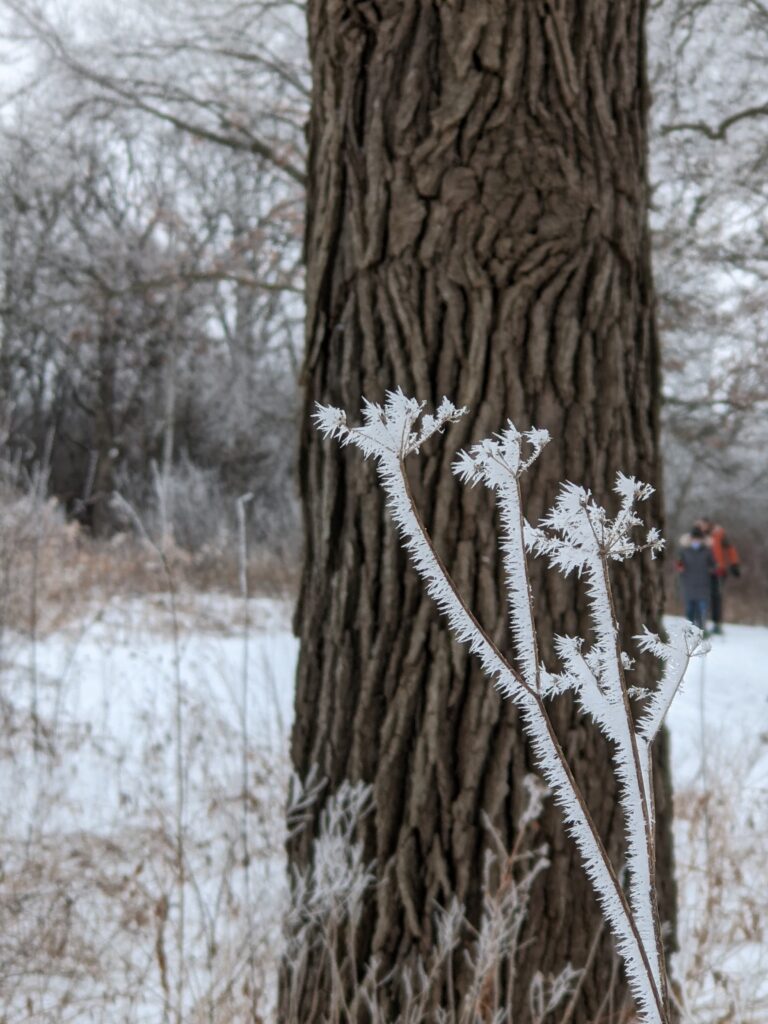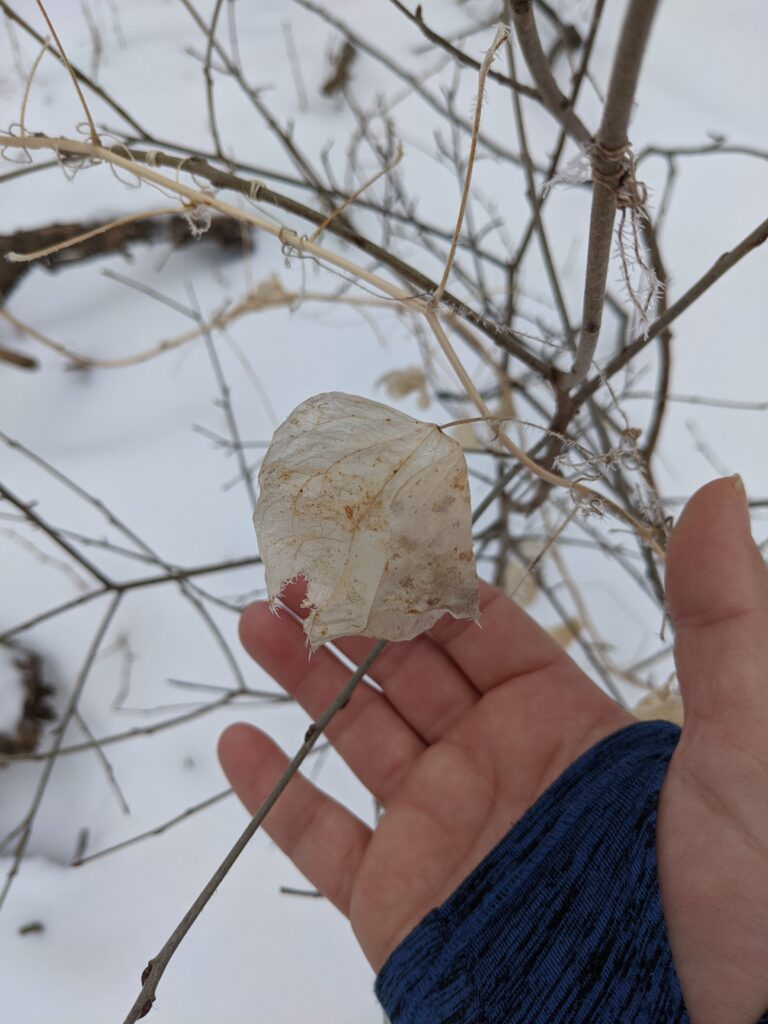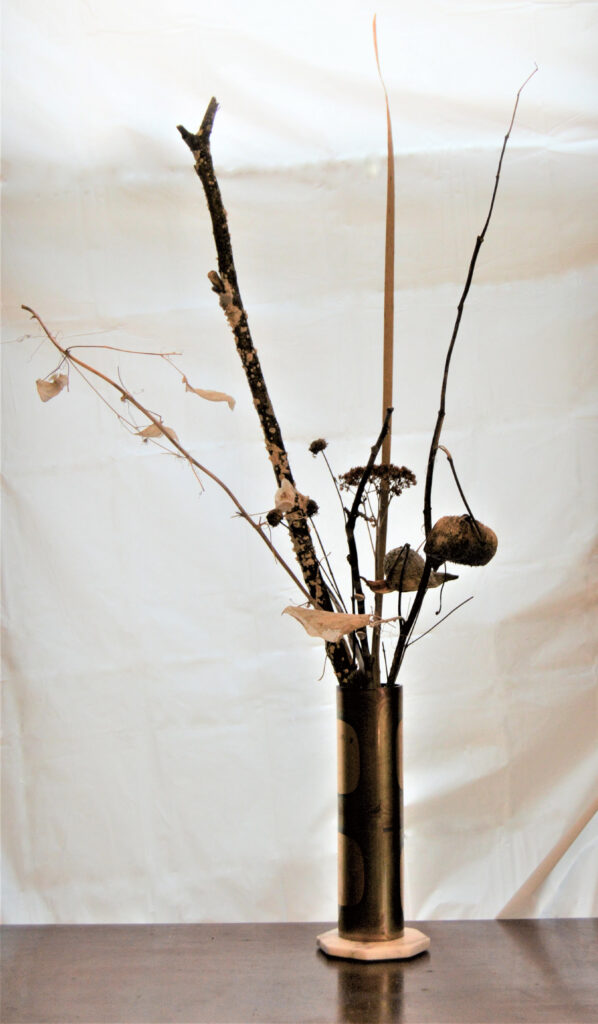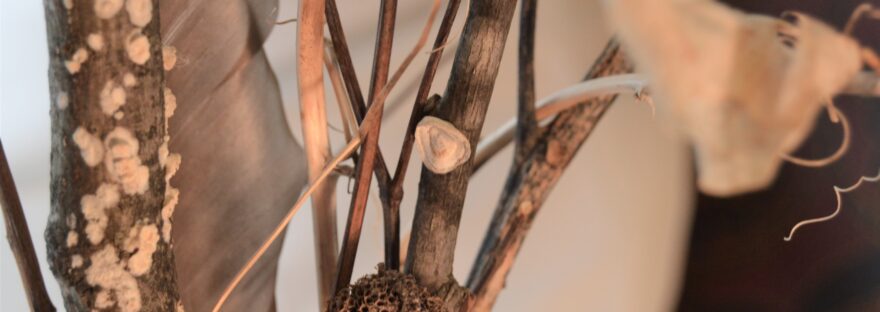Lately I’ve been taking walks every Sunday with a friend. It’s socially distanced, outside, and away from our houses and kids. We’ve explored neighborhoods and trails, window-shopped our quaint downtown on shoveled sidewalks and slogged through woods on snowshoes, searching for winter’s treasures. We both look forward to it every week, not just for the chance to get a couple hours of fresh air but for the novelty of in-person conversation.

One Sunday we were walking a trail by the Yahara River that wends through the woods. In the summer time, bullfrogs belt their basso profundo blues and red-winged blackbirds trill their swampy arias. In winter it’s far from barren, just more quiet. Snow shushes everything and the wildlife, if they aren’t sleeping deep in nests and holes, at least don’t feel like singing.
The beauty of the woods in winter is sometimes blatant – white snow sticks to black trees preening to be photographed naked – and other times elusive. Leaves turn brown, flowers die, color leaches out of the natural world. Maybe it’s that hyper-awareness that’s come from being cooped up indoors, but I found myself eagerly looking for beautiful objects this winter as if on a dare.
So when we stopped on a bench a mile and a half from our cars, I didn’t just notice the big black oaks that twist so dramatically. I tuned in to a small white branch among the decaying foliage.
I got close to inspect it. Along the pale branch were curling whisps like a grapevine seeking a fence, and leaves that still had all their fibers and structure but none of their color. I’d never seen this kind of ghost leaf before, but since then I’ve realized they’re pretty common in the Midwest. Back in Montana, the leaves either dry and crumble, or rot into dirt, not stop halfway through and decide to haunt the forest floor.

I was reaching for them, lacey leaves like delicate wings, and I wanted to explain to my friend why I was so interested in dead leaves. I wish I’d thought to call my collection of dry naked sticks a “winter bouquet,” but sometimes writers aren’t eloquent on the spot. So I plucked the ghost vines and said, “I have this vase of … desiccated things in my house, and I want to add this to it.”
She laughed. “If I had to pick a phrase that described how you decorate,” she said, “it would be ‘I have this vase of desiccated things in my house.’”
It sounded more morbid than I usually think of my eclectic and colorful home, but at the same time, she’s not wrong. I collect shells and rocks, feathers and sticks with ant writing. I have a couple animal skulls (clean), a paper wasp nest (empty), and an enormous array of crystals. My husband tends more toward strange devices and mechanical things, like microscopes, pocket watches, and an antique electroshock machine with a hand crank.
It’s important to have friends who truly see you, and who can put a name to your truths.

My winter bouquet had two sticks in it. One was furred with white fungus, the other had two tiny white cups of mushroom like wee satellite dishes or heavy-lidded eyes. Longer than flowers, they cast dramatic shadows in their vase. A grey feather and empty milkweed pods added variety in texture. The ghost vines were next. I took a lot of time arranging them so they would shoot out in just the right direction, create a pleasing line along and away from the rest of the bouquet. I added long flat grass fronds and tight dark stems of headless flowers, which my cats promptly destroyed.[1]
All in all the arrangement has an otherworldly feel that I like. When you think about it, our world becomes a bit alien in winter, as plants die, wildlife sleeps, and humans often hide themselves away. The seed pods, curling and hairy, look as if something strange and possibly tentacled had hatched out of them. The ghost leaves whisper, translucent, of the world before the seasonal apocalypse. Everything is stark, minimal, silhouetted.




I’ve picked up random gifts from Mother Nature on a regular basis (one of my many witchy habits), but I never chose to arrange them deliberately until this winter. Now as spring is booting up and it’s past time to take down the Christmas lights on the porch, I’m unsure what to do with my vase of desiccated and beautiful oddments. Should I pack it away, bundling them carefully into a box in the attic with my other seasonal décor? Or should I sprinkle them in my backyard bushes and kitchen garden, letting them return to the earth and resume their arrested decay? If I keep them, am I depriving future winters of the joy of collecting a new array of Spartan beauties?
As usual, I’m overthinking it. Of course I will pack them away. Next autumn or winter, I’ll take them out, cull the bits that have crumbled to dust or wilted beyond saving. The rest will go back in their vase, standing tall and austere in the corner of my dining room, and I’ll add more ghost leaves or cemetery weeds or whatever next winter decides to gift me. I’ll find a way to celebrate in the dark times and appreciate the loveliness in demise.
After all, it’s who I am.


[1] Post script: After I took my photos, I left the winter bouquet in my library instead of putting it back on the high cabinet in the dining room. A crash and skitter, spilled sand and broken sticks, and I instantly remembered how impermanent nature’s beauty can be. Thanks, Fluffy, Topaz, and Ruby, for reminding me!
Read my post about summer bouquet, Wildflower Vagabond.

